Here’s our big list of the 101 greatest animal facts. This includes some of the most asked, fun, surprising and crazy animal facts from across the animal kingdom. The loudest, deadliest, fastest, largest, most bizarre and random, are all here in our big animal fact list.
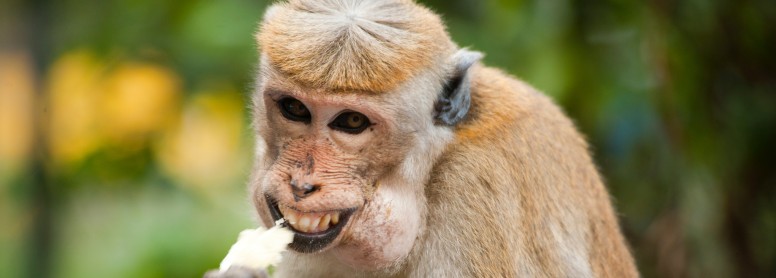
1. The loudest animal in the world is a mere 2cm long, prawn. The Pistol Shrimp is capable of snapping its claw shut so rapidly, that it creates a bubble which collapses to produce a sonic blast, louder than a Concorde’s sonic boom.
The shock wave can reach 230 decibels, also louder than the sound of a gunshot. The imploding bubble for split seconds also generates temperates of 4,400C, nearly as hot as the sun, killing its prey. 1
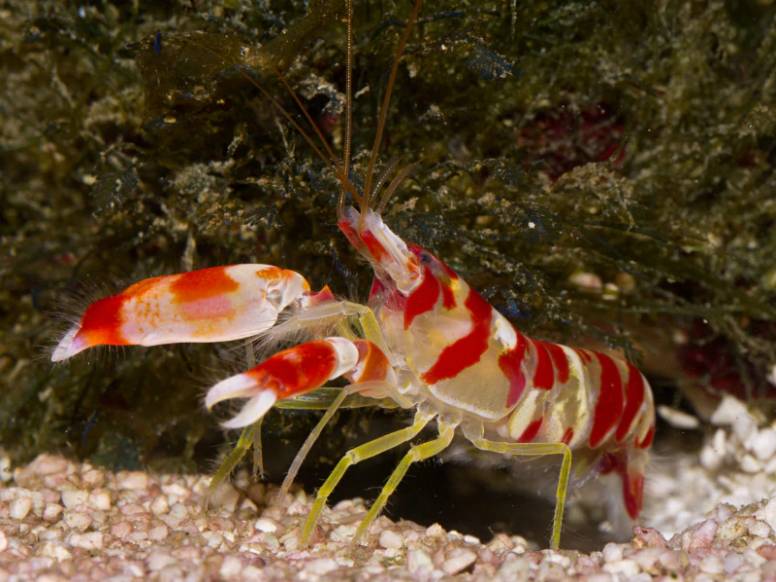
2. Flamingos are not pink. They are born grey, their diet of brine shrimp and blue green algae contains a natural pink dye called canthaxanthin that makes their feathers pink.
Flamingos in zoos often lost their colouring, until zoo keepers supplemented their diets. 2
3. Otters “hold hands” while sleeping, so they don’t float away from each other.
And it’s super-cute. Look.

4. Hummingbirds are the only known birds that can also fly backwards.
They often do this when retreating away from flowers. 3
5. Dolphins use toxic pufferfish to ‘get high’.
Dolphins deliberately handle pufferfish causing them to release toxins as a defence mechanism. These toxins can be deadly in high doses, but also have a narcotic effect – and are a powerful hallucinogenic, which dolphins appear to enjoy.
A documentary witnessed them passing around pufferfish in a pod, before floating just underneath the water’s surface, apparently ‘mesmerised by their own reflections’ afterwards. 4
6. The Inland Taipan (also known as, the Western Taipan) is the most venomous snake in the world. A single bite contains enough venom to kill at least 100 fully grown men, and can kill within just 30 minutes, if left untreated.
They very rarely ever come in contact with humans, however. Every reliable identification of a snake bite victim from an Inland Taipan have been herpetologists, when handling or studying the snakes. They have all survived, due to successful treatment with antivenom.
7. The worlds deadliest animal isn’t a shark, bear or tiger, but something far smaller – the mosquito. According to the World Health Organization, 725,000 people are killed each year from mosquito-borne diseases, such as Malaria, dengue fever and yellow fever.
Mosquito outnumber every other animal in the world, apart from ants and termites. They can also be found in nearly every part of the world, which all add up in the risk they pose to humans.

8. There are more than 1.4 billion insects for EACH HUMAN on the planet, according to recent estimates.
Ants have colonised almost every landmass on Earth. Their population is estimated as 107–108 billion alone, in comparison to approx. 7 billion humans on the planet. 5
9. The shortest living animal in the world is the Mayfly. Its entire adult lifespan is just 24hrs.
The Mayfly reproduces and then dies, during that short 24hr period of life. Some species of Mayfly only live for 8-10 hours. Although they have the shortest adult lifespan, they actually exist as a nymph in water from 3-7 years, depending on species.
10. The horned lizard is able to shoot blood from its own eyes, up to a distance of 3 feet away. The rather bizarre and disgusting act is a defensive mechanism to confuse predators.
Their blood contains a chemical that is noxious to predators, and this isn’t its only trick – short-horned lizards are also capable of inflating their bodies up to twice their size to scare anything away. 6
11. Roosters prevent themselves from going deaf due to their own loud crowing, by tilting their head backs when they crow, which covers their ear canal completely, serving as a built-in ear-plug.
A study showed that their crowing averages over 100 decibels, which is roughly the same as running a chainsaw. 7
12. Little is known about the elusive Giant squid, however the largest squid ever found measured over 50 feet and weighed nearly a tonne.
To put that in perspective, that’s bigger than a bus. 8
13. The pangolin is able to roll up into an armour-plated ball, so lions can’t eat them.
If only this worked for poachers, who simply pick them up when they roll into a ball.
14. Koalas can sleep for up to 22 hours a day.
Koala need more sleep than most animals, because their diet of eucalyptus leaves contain toxins, are very low in nutrition, and high in fibrous matter – so they take a large amount of energy to digest!
15. Swifts spend most of their lives flying in the air, and can fly for almost an entire year, without ever landing.
A study showed that over a 10-month period, a swift stopped for just 2 hours. 9
16. Even after having its head cut off, a cockroach can still live for weeks.
Even stranger, a cockroach’s head can actually survive by itself for a few hours, too. 10
17. A group of parrots is known as a pandemonium.
And the collective noun for porcupines, is a prickle.
18. Cows poo up to 15 times a day, which can be as much as 115 pounds of manure per day, or approximately 21 tons per year.
The large quantities are often put to good use, though – manure, to fertilizer, to fuel, or biogas to create electricity and heat for developing parts of the world. 11
19. A common garden snail has 14,000 teeth.
Their microscoptic teeth are called radula, and some species actually have over 20,000 teeth.
20. A Blue Whales tongue can weigh as much as a car, or a small adult elephant.
A Blue Whales tongue can weigh approx. 2.7 tonnes, or 6,000 – 8,000 pounds (2,720 – 3,630 kg).
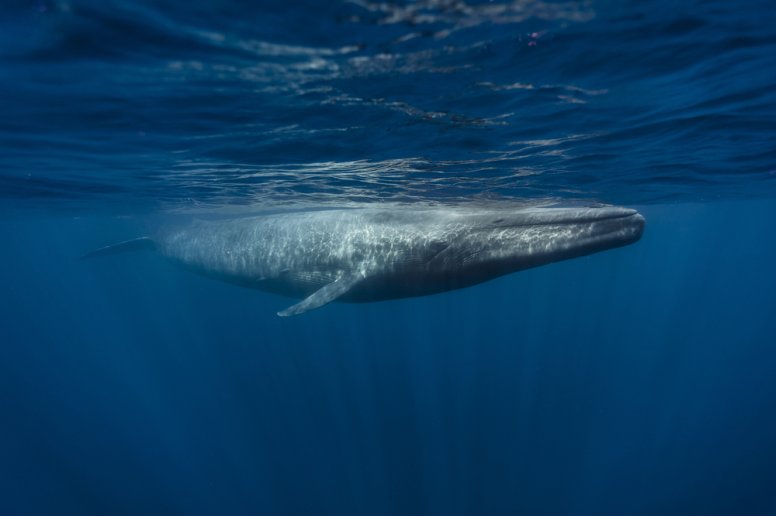
21. The longest living, verified animal is a Madagascar radiated tortoise, which died at an age of 188 years in May 1965.
However, there might be even older. Adwaita, an Aldabra giant tortoise, died at an estimated age of 255 in March 2006 in Alipore Zoo, Kolkata, India. If verified, it will have been the oldest terrestrial animal in the world. 12
22. The fastest land animal on the planet is a cheetah. It can reach speeds of up to 75 mph (120 kph).
While the Peregrine Falcon is the fastest bird, with a diving speed of 242 mph (389 kph). The fastest animal in horizontal flight is the brazilian free-tailed bat, which can reach speeds of 100mph. The sailfish and black marlin are joint fastest sea animals, and can swim up to 22 mph (36 kph).
23. Baby elephants suck their trunks for comfort.
Just like babies and young children suck their thumbs, awwww.
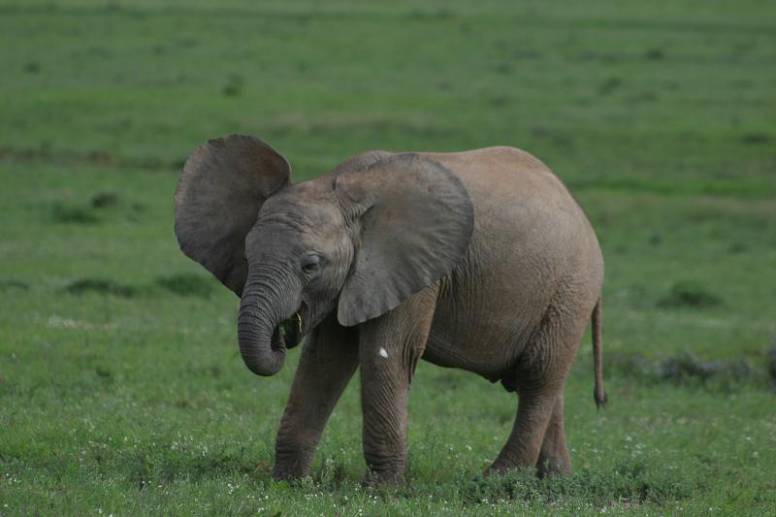 Photo courtesy of Darkroomillusions.
Photo courtesy of Darkroomillusions.
24. The Nile crocodiles jaws can apply 5,000 pounds of pressure per square inch – the strongest bite of any animal in the world.
A human’s jaw produces 100 pounds of pressure per square inch in comparison. A nile crocodiles bite is 10 times more powerful than that of a great white shark
25. Axolotl are able to regenerate lost limbs and body organs.
Mexican walking fish can regrow the same limb up to 5 times, and even regenerate parts of its brain.
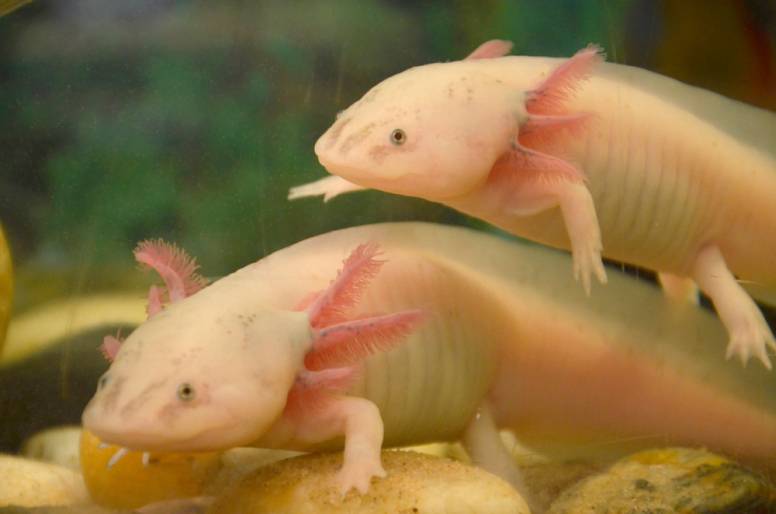
26. The Giant Pacific Octopus has 3 hearts, 9 brains and blue blood.
They are also able to change their colour and texture to camouflage themselves in a blink of an eye.
27. A flea can jump distances 200 times their body length.
They are able to jump 10 inches (25cm) vertically and up to 18 inches (45 cm) horizontally, making them one of the planets best jumpers relative to its size. It’s equal to a human jumping as high as the Empire State Building in New York.
28. The male seahorse goes through pregnancy and gives birth to babies. They are the only animal on earth where the male carries the baby rather than the female.
The male seahorse has a pouch on its stomach in which to carry babies—as many as 2,000 at a time.
29. Pufferfish can contain a tetrodoxin, a toxin that is up to 1,200 times more deadly than cyanide to humans. There is enough toxin in one pufferfish to kill 30 adult humans, and there is no known antidote.
Amazingly despite this, some pufferfish meat is considered a delicacy in Japan. The meat called Fugu, is expensive and only prepared by licenced chefs with over 3 years of rigorous training who remove toxic parts of the meat for diners.
30. The loudest animal relative to size is the Water Boatman, which measures at just 12mm long, but can produce 99 dB of sound by rubbing its genitalia across its abdomen.
This is the equivalent noise level of operating a circular saw, or a drill. 13
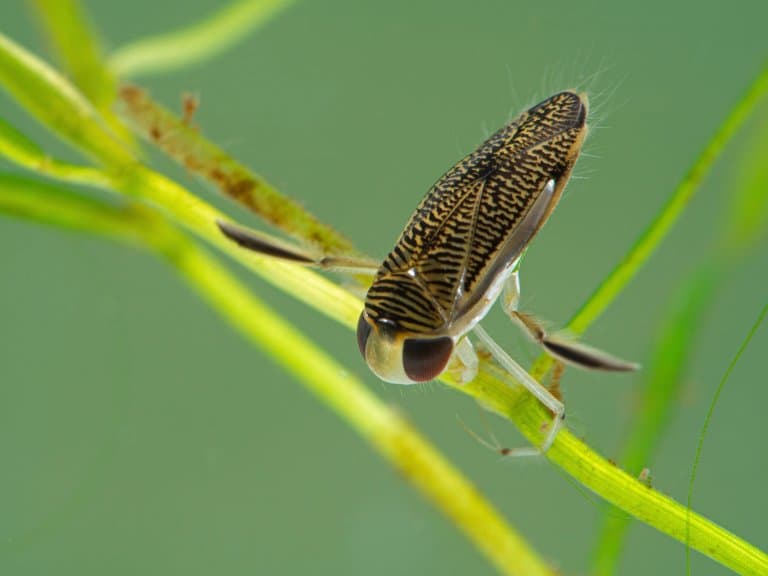
31. The howler monkey is the loudest land animal. Its calls can be heard from 3 miles (5 km) away.
At its peak, the howler monkey can produce sounds that reach 140 decibels. That’s as noisy as a jet engine, on take off!
32. There is an average of 50,000 spiders per acre in green areas.
There’s over 45,000 known spider species, with the venom of a few only known to be dangerous to humans.
33. The aptly named colossal squids eyes are as large as a basketball.
This allows the colossal squid to detect the faint light of a predator from over 400 feet (120 metres). 14
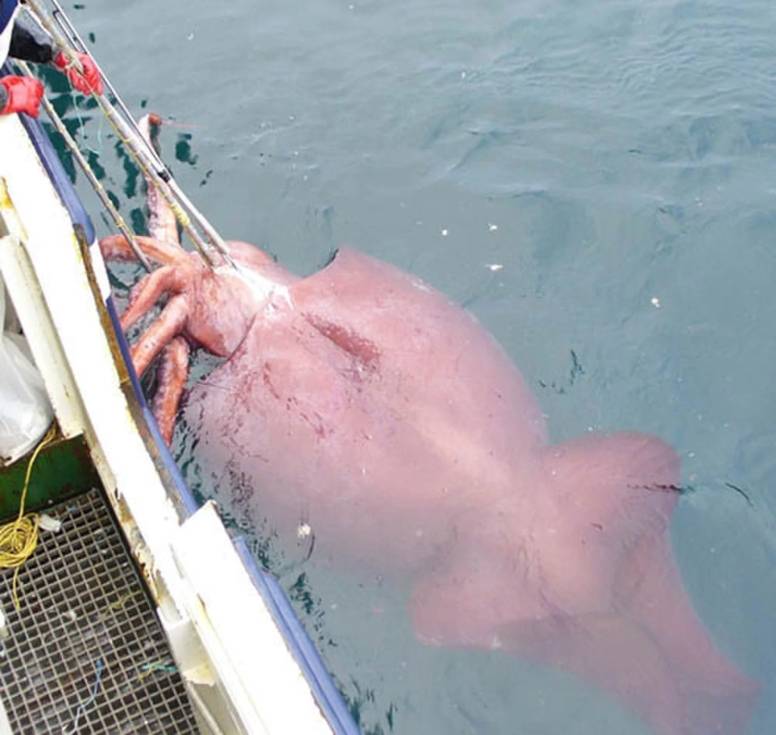
34. White-tailed jackrabbits are the greatest land jumpers, having been recorded leaping an astonishing 21ft (6.4m) vertically.
That’s higher than 3 average sized men all stood on top of each other. This large species of hare can also run up to 35mph (55kph) when escaping predators. 15
35. Grey-headed Albatross can circle the globe in only 46 days.
The incredible round-the-world journey covers 14,000 miles over the 46 day period at a steady 13mph. The grey-headed albatross perform this feat by making various pit-stops along the way. 16
36. Giraffes are the tallest land animal in the world, reaching heights of 19ft (5.8 m). The ostrich is the world’s tallest bird. It can grow up to 9 feet (2.7m) tall.
Over 2 metres (7ft) of a giraffes total size is its famously long neck, which helps it reach leaves in tall trees.
37. An ostrich legs are so powerful that their kicks can kill a lion.
Or a human! Each two-toed foot has a long, sharp claw – making them formidable weapons. Animals often end up running away from the ostrich.
38. The dementor wasp paralyses cockroaches with venom to its head, turning them into a zombie-like state. The toxins leave the cockroach unable to control its own movements, which incredibly makes it run into the wasps nest to meet its demise.
The venom is thought to cut brain activity that makes cockroaches sense fear and run away to safety. The dementor wasp will then lay eggs on the cockroach to act as an incubator for its young.
39. More than half of all pigs in the world are kept by farmers in China.
There are over 440 million pigs in China. United States in comparison has a mere 73 million pigs.
40. Polar bears have jet black skin under their white fur coats.
It helps them absorb heat to keep warm, while the white fur helps provides camouflage in the snowy and icy environment they live.
41. Giant anteaters consume up to 35,000 ants and termites in a single day.
They use their long sticky tongues to slurp up hundreds of ants per minute. Interestingly, anteaters purposefully never destroy an ant nest, preferring to leave some ants alive to rebuild, so it can return and feed again in the future.
42. The little known pangolin is the worlds most poached and trafficked animal.
This is due to the high demand of their scales and meat in Asian cultures. 70% of Chinese citizens believe pangolin products have medicinal value, when its been scientifically proven to be false.
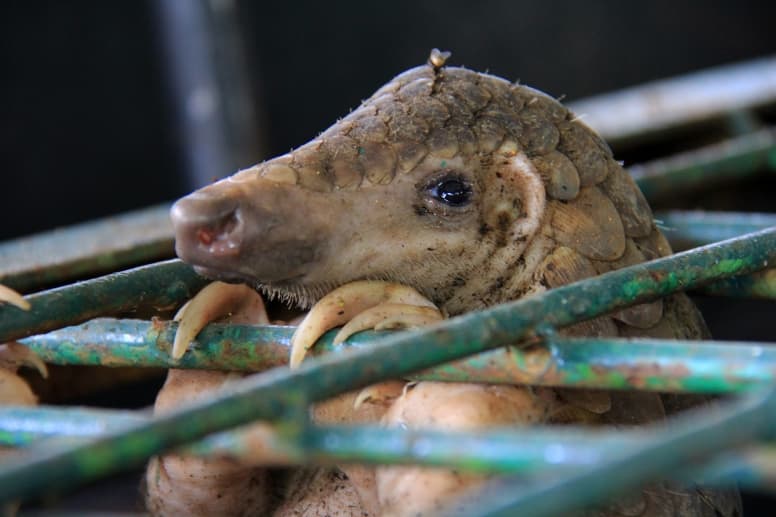
43. Great white sharks can detect a drop of blood in 25 gallons (100 litres) of water and can even sense tiny amounts of blood from 3 miles (5 km) away.
They use their acute sense of smell to detect blood using an organ called the ‘olfactory bulb’.
44. The Naked Mole-Rat can live in an almost zero oxygen atmosphere.
Incredibly, in a zero oxygen environment, the Naked Mole-Rat can still survive for up to 20-minutes without suffering any harm at all.
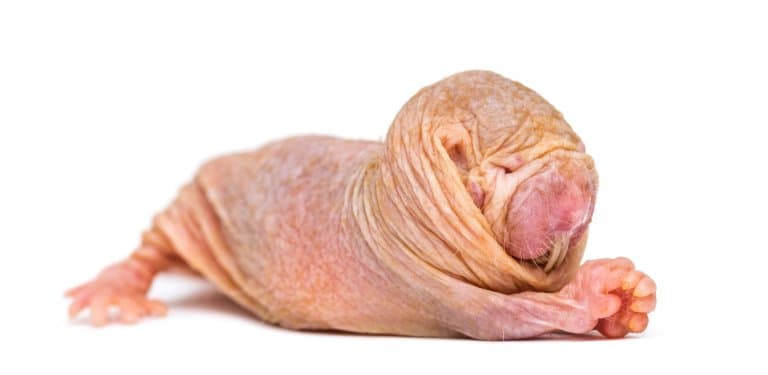
45. The smell of a skunk is powerful enough for a human to smell it up to 3.5 miles (5.6 km) away.
The foul smelling spray from a skunk can also cause skin irritation and even temporary blindness.
46. The most venonmous fish in the world is the 30cm Stonefish.
Stonefish have 13 sharp fin spines on their back, each with two venom glands. Their stings are extremely painful, can be lethal to humans, and mostly occur as a result of stepping on the creature.
47. Only 5% of cheetah cubs survive to adulthood.
A study in the 90’s in the Serengeti found that 95% of cheetah cubs died before reaching adulthood. Many deaths were due to Lions, but also other predators and disease.
48. A tigers rear legs are so powerful, that they have been found remaining to stand even after death.
Tigers have been witnessed to have been shot, bled out, and died – and remained standing throughout.
49. A Rhinoceros‘s horns are made of ‘keratin’, the same type of protein that makes up hair and fingernails.
Some species of Rhinos have two horns, while others just have a single horn.
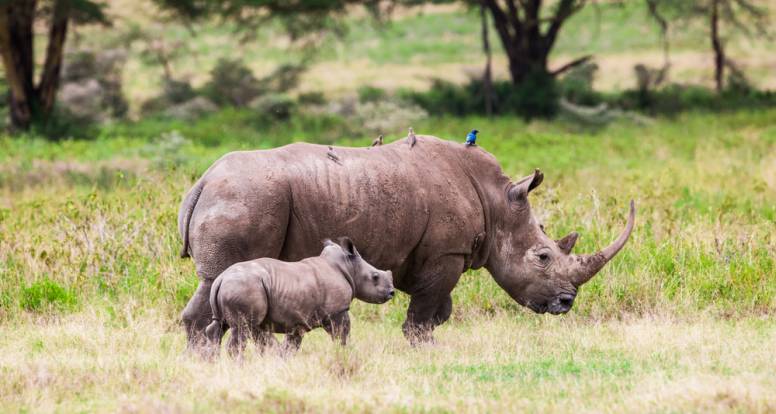
50. The Alpine Swift is able to stay airborne for over 6 months without touching down.
It holds the world record for the longest recorded uninterrupted flight by a bird, at over 200 days in the air as it hunted flying insects on its wintering range in the skies over West Africa. 17
51. The Edible Dormouse (Glis glis) is able to hibernate the longest – up to 11-months of the year when food availability is low.
To be able to pull of this feat, they double or even triple their body weight before hibernation. During hibernation they are able to reduce their metabolic rate and the animal may stop breathing for periods of up to an hour at a time. 18
52. Japanese Macaques play with snowballs for fun.
These snow monkeys have been observed rolling up snowballs, then pushing them down hills just for the heck of it. Others gather lumps of snow in a ball and carry them around, proudly sometimes to the envy of other monkeys who try to steal it.
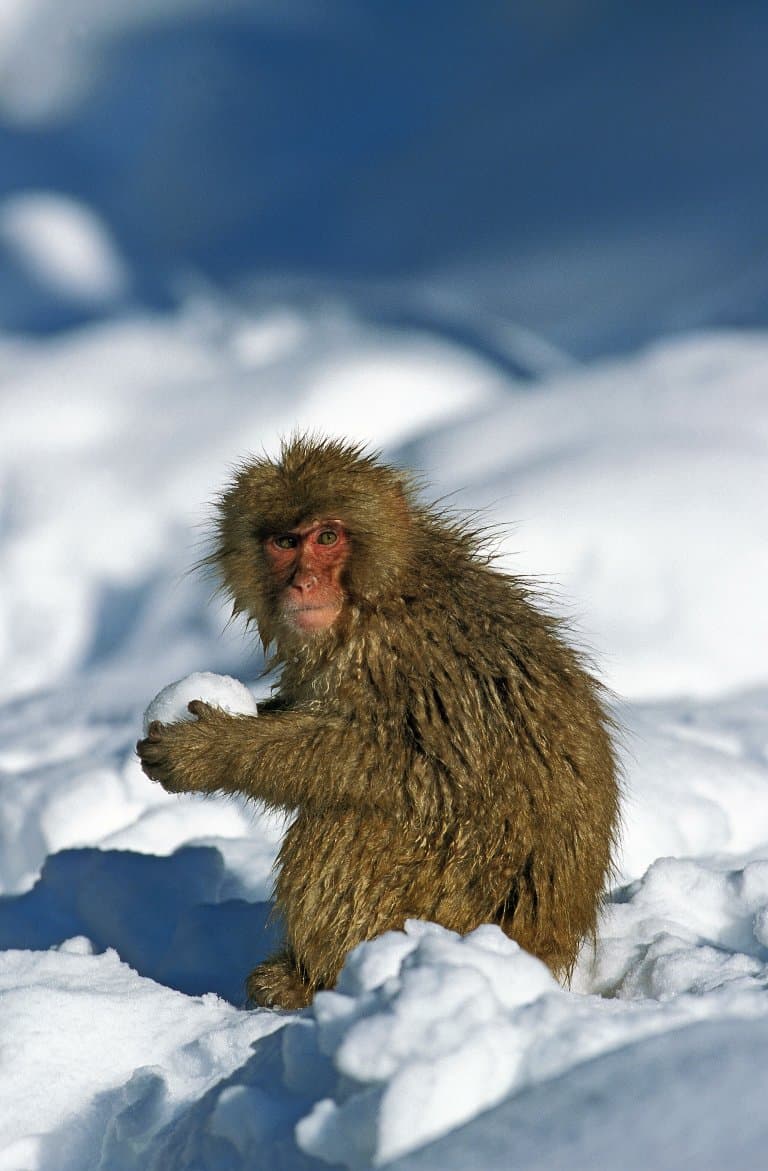
53. Sperm whales are the world’s largest predator.
They can be up to 20m long and weigh up to 80 tonnes. These giant whales dive down to almost 3,000m below the surface where they hunt giant squid. Giant squid can be the same size or bigger than sperm whales and will fight viciously with them. Adult whales can be seen with scars on their heads from the beaks of giant squid. 19

54. The largest insect to ever live was a “dragonfly” with a wingspan of over 75cm (2 and a half feet) across.
They are called Meganeuropsis and were around 247 million years ago. They were proficient predators, with large mandibles that they used to capture fish, amphibians and insects. 20
55. Koala’s have fingerprints almost identical to human.
It is so hard to distinguish between the fingerprints of koalas and humans that even under a microscope it is hard to tell. There are even reported cases of a koala’s fingerprints confusing forensics at crime scenes. 21
56. Greenland sharks are the longest living vertebrates on earth, with one individual thought to be over 400 years old
Greenland sharks are giant, reaching up to 5m in length, and live in the cold deep waters of the North Atlantic. They are rarely seen, and little is known about them. 22
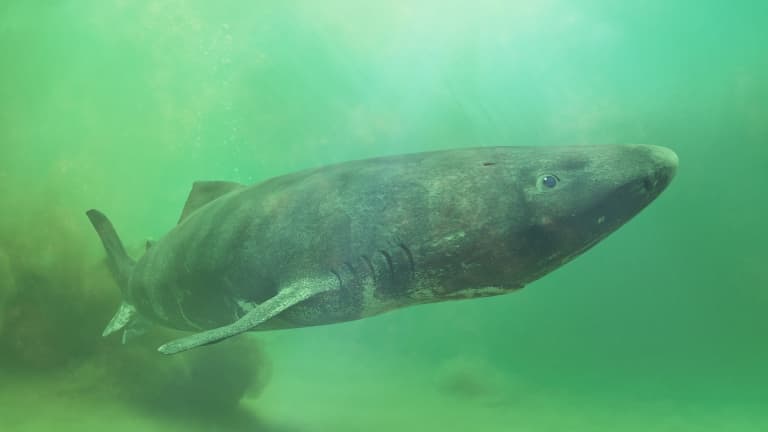
57. The blood ‘Dracula ant’ has the fastest recorded animal movement when it snaps its mandible.
This cannibalistic ant can go from zero to 200mph in 0.000015 seconds when it snaps its mandibles, that’s roughly 5,000 times faster than humans blink. 5 This is the fastest recorded movement in the animal kingdom. 23
58. The box jellyfish is considered the most venomous marine species in the world.
These cube shaped jellyfish have long tentacles and can be over 3m in length. Their toxin, delivered via stinging cells in their tentacles, is so potent that many die before they can even reach the shore. 24
59. The Japanese Spider Crab has the longest leg span of any arthropod.
From the tip of one claw to the other can be as long as almost 4m! Japanese spider crabs have 10 legs stretching out from a central body, giving it its spider like appearance. They live deep in the oceans south of Japan.
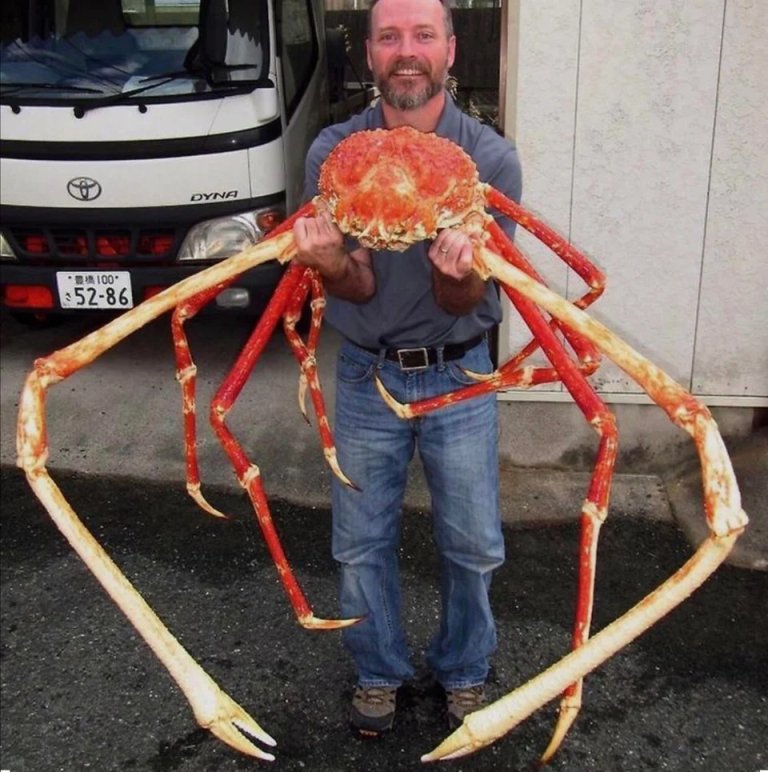
60. Some albatrosses are lesbians.
Albatrosses form bonds for life, returning to the same place every year to raise their young. Some of these bonds are between two female albatrosses, with a study finding that in one breeding area 31% of pairs were two females. 25

61. Some corvids (crows, rooks, ravens etc,) can understand physics.
Corvids are highly intelligent. They can use tools, solve puzzles, recognise faces, and even understand physics. Tests show that rooks have the same level of understanding of physics as a 6-month-old baby, which is higher than some apes. 26
62. Sheep can recognise faces.
As social animals, sheep are capable of recognising familiar and unfamiliar faces. Studies even suggest that they miss other sheep when they are taken away for a long time afterwards. 27
63. Tardigrades can survive in space and go without eating for more than 10 years.
Tardigrades are microscopic animals with crazy endurance abilities. They can survive in temperatures as high as 149oC or as low as -272oC and pressures 6 times more intense than the bottom of the ocean. They also look like tiny bears! 28
64. Duck-billed platypus don’t have nipples, instead they concentrate milk to their belly and feed their young by sweating it out.
The milk emerges from pores in the skin of the abdomen which the platypus puggles then lap up.
65. Echidna’s are relatives of duck-billed platypuses and have a beak, spikes, a kangaroo-like pouch, and lays eggs.
They are small at just 30–45cm and are known as spiny anteaters. One of the few egg-laying mammals, echidna lay a tiny egg which is then transferred into a kangaroo-like pouch where it then hatches.

66. Rabbits don’t have pads on their paws. Only fur.
Rabbits are a bit like hobbits, in that they have furry feet! They are the only land mammals that do not have paw pads. Paw pads are thought to help animals run faster, whereas rabbits move in a different way, and the thick fur still provides cushioning.
67. The Yangtze giant softshell turtle is the biggest freshwater turtle in the world.
It weighs between 150 to 220 kilograms (330 to 485 pounds) and is over 100cm (39in) in length. They are found primarily in the area of the Yangtze River in China.
68. Pea Crabs are miniature crabs that spend their whole lives inside oysters, clams, and mussels.
Named because it is the size of a pea, this tiny crab relies entirely on its host for food.
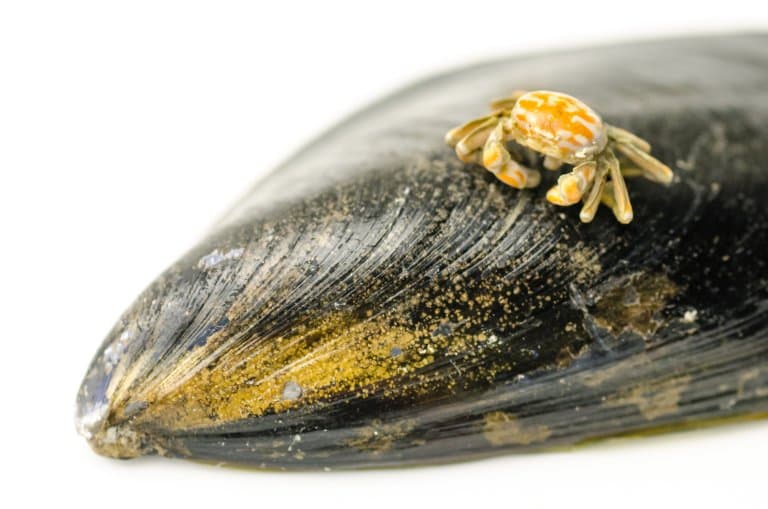
69. The Mariana snailfish is the deepest fish in the ocean, living up to around 8,000m below the surface.
They live down in the deepest trenches of the ocean where they hunt invertebrates, such as crustaceans and shrimp. 29
70. The shoebill stork can swallow baby crocodiles whole.
These huge birds are over a meter tall (up to 5 feet) and have a wingspan of more than 2 m (almost 8 feet!). Its name comes from its huge beak which is over 20cm long and almost that wide. Along with lungfish, it also eats baby turtles and baby crocodiles whole.

71. Lungfish are the only fish that have both lungs and gills.
This allows them to survive when the water in their ponds/lakes dries up.
72. Electric eels are in fact not eels, and give a shock strong enough to knock out a horse.
In the Tennessee Aquarium an electric eel’s tank has been hooked up to a computer programmed to send out a tweet whenever the eel produces enough electricity. 30
73. The yellowhead jawfish incubates its eggs in its mouth.
The male gathers up all of the eggs once they’ve been fertilised and stores them in his mouth until they hatch.
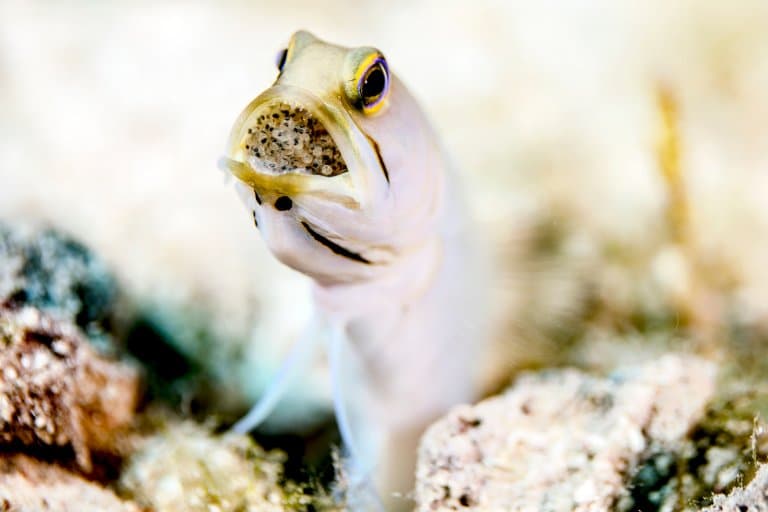
74. The patu digua is thought to be this smallest spider in the world at just 0.37 mm.
This Colombian spider is about one fifth the size of the head of a pin.
75. Vampire bats share blood with their friends.
Vampire bats need to eat blood at least every 48 hours to survive. Bats will share blood after a good meal with another bat that’s fed them in the past. 31
76. The U.S. military trained bottlenose dolphins.
Bottlenose dolphins were used in both the Vietnam and the Gulf to detect enemy swimmers trying to plant explosives on ships. 32

77. Wojtek the bear was a corporal in the polish military during WWII.
Wojtek was brought by polish shoulders while in Iran. He was made an officer so that he was allowed rations and eventually was promoted to corporal. He helped out by carrying boxes of ammunition.
78. Horned lizards shoot blood out of their eyes.
To scare of predators, this lizard shoots blood out of its eyes.
79. Cuckoo birds hide their eggs in the nests of other species.
The other bird species then raises the cuckoo chick as if it were its own, and the cuckoo mother doesn’t have to do any of the work.
80. Elephants mourn their dead.
Elephants will return to the place where family members died and stand in silence over the bones, sometimes bowing their heads.
81. Meerkat parents train their offspring to hunt scorpions.
They will bring back dead or almost dead scorpions back to the younger ones so that they can practice killing them without getting stung.
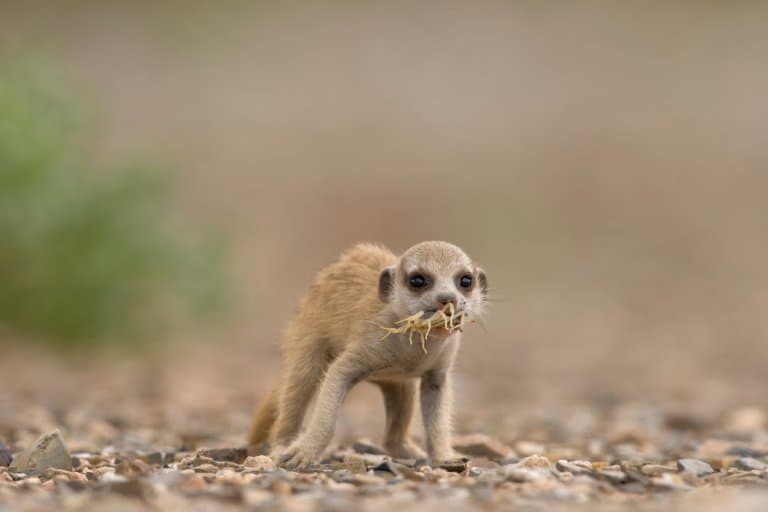
82. Only 3-5% of mammals are monogamous.
The majority of mammals are not monogamous, making humans unusual.
83. Gorilla’s have been seen dismantling traps set by poachers.
Poaching is a big problem for gorillas, but young gorillas have learnt how to trap and dismantle snares. 33
84. The earliest found depictions of dogs come from 8,000 years ago.
Dogs have been human-kinds best friend for a long time, with a carving in a rock face in Saudi Arabia showing a man hunting with 13 dogs. Two of them even have leads!
85. Cat’s were domesticated 9,500 years ago in Ancient Egypt.
They were worshiped in Ancient Egypt and some historians report that it was illegal to kill a cat.
86. Emperor penguins are the world’s biggest penguins, and they trek 50–120 km (31–75 m) across the Antarctic to reach breeding colonies.
The impressive emperor penguins reach 100 cm (39 in) in length and weigh 22 to 45 kg (49 to 99 lb). They breed during winter, when they emerge from their more natural habitat in the ocean to trek long distances over treacherous ice.
87. Yaks are specially adapted to high altitudes, with a huge lung capacity and small red blood cells.
Native originally to Tibet, these giant oxen-like animals live at high altitudes in the Himalayas (4,000–6,000 metres). They are specifically adapted to the low oxygen levels with a lung capacity that is ~3 times that of normal cattle, and have smaller red blood cells to improve oxygen transport. 34
88. Cuvier’s Beaked whales are one of the deepest diving mammals and can collapse their lungs to survive the high pressure.
One of the deepest diving mammals, one individual was recorded diving down to 2,992 m (9,816ft) below the surface. The pressure at these depths is so high that in order to survive it they have to collapse their lungs. 35
89. Orangutans are the heaviest tree-dwelling animals.
There are three species of orangutan and adult males of all three typically weigh around 75kg (165lb) while females are ~37 kg (82 lb). They are ~1.5m(5ft) tall and have a huge arm span of ~2m (6ft). They spend most of their time up in the canopy, making them the heaviest tree-dwelling animal.
90. Chimpanzees are very intelligent and make all kinds of tools.
For example, some use long sticks to fish out termites from their mounds. Other chimps have been recorded creating “spears” to hunt bushbabies! 36
91. Shrike’s impale their prey on sticks to save them for later.
Also known as “butcherbirds” they are famous for being fairly brutal songbirds. They catch all kinds of animals, including crickets, lizards, and small birds, and impale them on sticks to save them for later.
92. Vultures urinate and defecate on their own legs and feet to cool off on hot days.
This a cooling mechanism called ‘urohydrosis’. Weirdly this can also help kill any bacteria picked up from walking through dead animals which they prey upon.
93. The wood frog spends 7 months of the year frozen.
These Alaskan frogs freeze almost completely at the start of winter, with two-thirds of their body water turning into ice. To all intents and purposes, they seem dead; their heart stops beating, and their blood flow stops. However, once winter starts to thaw so do they and they hop back to life. 37
94. Certain animals have anti-freeze proteins that allow them to survive extreme temperatures.
These anti-freeze proteins prevent water in the cells of the animals from crystalising and forming ice. Examples of animals with this superpower include the winter flounder and the eelpout.
95. Honeypot ants swell up to a huge size with food.
Honeypot ants have to be seen to be believed. During wet season, certain ants consume huge amounts of nectar, making their abdomens swell up to the size of a grape. Then, during dry season, they provide the other ants with food by throwing the nectar back up again. Yum!

96. The lesula, discovered in 2007, has giant human like eyes and a blue bottom.
This relatively newly discovered monkey lives in the Congo. The lesula eyes are very distinctive because of their human-like appearance, as are their bright blue bums.
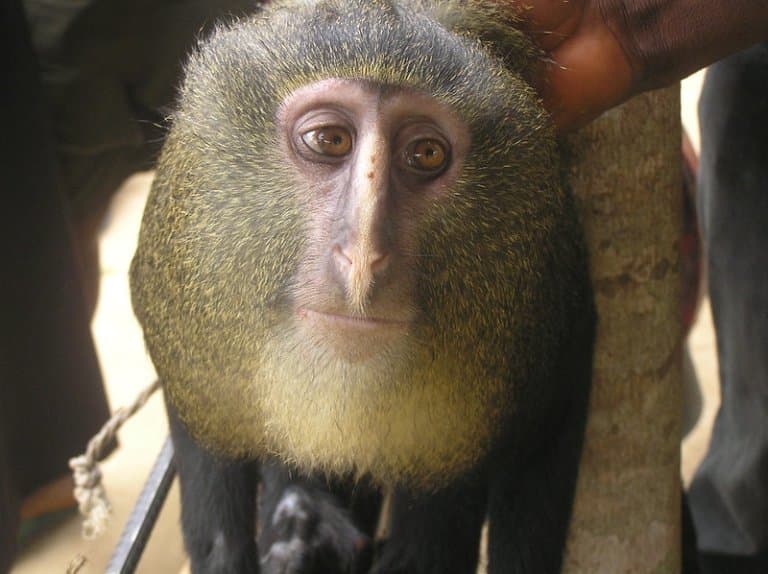
97. The Donald Trump caterpillar looks identical to the ex-president’s hair.
This species of caterpillar, prior to 2016, was known as the Flannel Moth Caterpillar (Megalopyge opercularis). It gained popularity as it is very furry and bright orange, giving it an uncanny resemblance to Trump’s hair (wig?). This ‘fur’ however, is actually composed of multiple venomous ‘hairs’. Grabbing hold of one of these caterpillars is a painful experience. 38
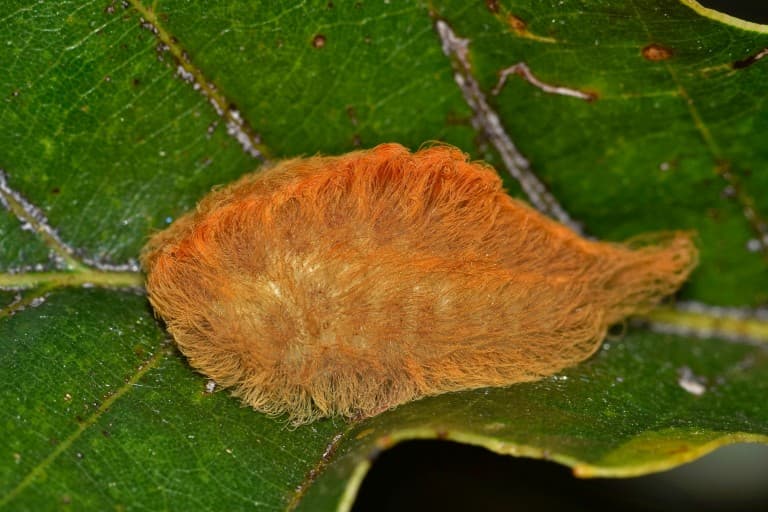
98. Bees have 5 eyes. 2 at the front like a fly, and 3 smaller eyes like a spider.
The three ‘ocelli’ eyes on the top of its head detect light, so the bee can sense if it’s being approached by a predator.
99. Giant vampire bats lived 100,000 years ago and had a wingspan of 50cm (20 inches).
These giant bats were roughly 30% larger than the modern vampire bats. The remains of one were recently found in a cave in Argentina.
100. There are no ‘male’ Mourning geckos.
They are an all female species, as they are ‘parthenogenetic’, meaning it can reproduce without males. Around 70 species in the world have shown this behaviour, including some crabs, snails and the Komodo dragon.
101. There are an estimated 8.7 million species on earth and more than 80% of them are undiscovered.
Based on current data, complex statistics, and models we can predict how many species there are on Earth, telling us how many are still left to be found. It will likely take another 500 years to find them all. 39
Fact Sources & References
- E. Davies (2016), “The Worlds Loudest Animal May Surprise You”, via BBC Earth
- J. Findlay (2009), “Why are flamingos pink?”, via Science Focus
- N. Sapir, R. Dudley (2012). “Backward flight in hummingbirds employs unique kinematic adjustments and entails low metabolic cost”, via Biologists.org.
- R. Nuwer (2013), “Dolphins Seem to Use Toxic Pufferfish to Get High”, via Smithsonian.
- S. Worral (2017). “Without bugs, we might all be dead”, via National Geographic.
- S. Hewitt (2015). “If it has too, horned lizards will shoot blood from their eyes”, via BBC Earth.
- B. Yirka (2015). “Why roosters don’t go deaf from their own loud crowing”, via Phys.org.
- M. Walker (2016), “Giant squid can grow to extraordinary lengths”, via BBC Earth
- A. Williams (2016). “These birds can fly almost 10-months without landing”, via National Geographic.
- C. Choi (2007). “A nuclear war may not trouble them, but does decapitation?”, via Scientific American.
- D. Fischer (1998). “Energy Aspects of Manure Management”, via University of Illinois.
- M.Wittlin (2006). “Charles Dawin Contemporary Marches Towards Her Third Century”, via Seed Magazine.
- J. Sueur, D. Mackie, J.Windmill (2011). “So Small, So Loud: Extremely High Sound Pressure Level from a Pygmy Aquatic Insect”. PLOS One.
- S. Pappas (2012). “Slam Dunk! Why Giant Squid Sport Basketball-Size Eyes”, via Live Science.
- E. Davies (2016). “The greatest jumper on Earth is probably not a flea”, via BBC.
- J. Croxall et al (2005). “Global Circumnavigations: Tracking Year-Round Ranges of Nonbreeding Albatrosses”, via Science Mag.
- F. Liechti et al (2013). “First evidence of a 200-day non-stop flight in a bird”, via Nature.com.
- C. Wilcox (2017). “Some Animals Don’t Actually Sleep for the Winter, and Other Surprises About Hibernation”, via National Geographic.
- Than K. How Whales Attack Squid: Mystery Deepens. Live Science. Published 2007. Accessed May 10, 2021.
- Kukalová-Peck J. Carboniferous protodonatoid dragonfly nymphs and the synapo- morphies of Odonatoptera and Ephemeroptera (Insecta: Palaeoptera) JARMILA KUKALOVÁ-PECK. Palaeodiversity. 2009. Research Gate. Accessed May 10, 2021.
- Wolchover N. Koalas Have Human-like Fingerprints | Live Science. Accessed May 11, 2021.
- Nielsen J, Hedeholm RB, Heinemeier J, et al. Eye lens radiocarbon reveals centuries of longevity in the Greenland shark (Somniosus microcephalus). Science (80- ). 2016;353(6300):702-704. doi:10.1126/science.aaf1703
- Larabee FJ, Smith AA, Suarez A V. Snap-jaw morphology is specialized for high-speed power amplification in the Dracula ant, Mystrium camillae. R Soc Open Sci. 2018;5(12). doi:10.1098/rsos.181447
- Box Jellyfish | National Geographic. Accessed May 11, 2021.
- Young LC, VanderWerf EA. Adaptive value of same-sex pairing in Laysan albatross. Proc R Soc B Biol Sci. 2013;281(1775). doi:10.1098/rspb.2013.2473
- Bird CD, Emery NJ. Rooks perceive support relations similar to six-month-old babies. Proc R Soc B Biol Sci. 2010;277(1678):147-151. doi:10.1098/rspb.2009.1456
- Knolle F, Goncalves RP, Jennifer Morton A. Sheep recognize familiar and unfamiliar human faces from two-dimensional images. R Soc Open Sci. 2017;4(11). doi:10.1098/rsos.171228
- Copely J. Indestructible | New Scientist. New Scientist. Published 1999. Accessed May 12, 2021.
- Deepest fish – Press Office – Newcastle University. Accessed June 21, 2021.
- Phillips C. Snap, crackle, tweet: Tennessee Tech helps aquarium’s electric eel make splash on social media | Chattanooga Times Free Press. Published 2015. Accessed June 22, 2021.
- Carter GG, Farine DR, Crisp RJ, Vrtilek JK, Ripperger SP, Page RA. Development of New Food-Sharing Relationships in Vampire Bats. Curr Biol. 2020;30(7):1275-1279.e3. doi:10.1016/j.cub.2020.01.055
- Dolphins In Defence: How Marine Mammals Are Used By The Military. Accessed June 28, 2021.
- Gorilla Youngsters Seen Dismantling Poachers’ Traps—A First. National Geographic. Accessed June 28, 2021
- Qiu Q, Zhang G, Ma T, et al. The yak genome and adaptation to life at high altitude. Nat Genet 2012 448. 2012;44(8):946-949. doi:10.1038/ng.2343
- Schorr GS, Falcone EA, Moretti DJ, Andrews RD. First long-term behavioral records from Cuvier’s beaked whales (Ziphius cavirostris) reveal record-breaking dives. PLoS One. 2014;9(3). doi:10.1371/JOURNAL.PONE.0092633
- Roach J. Chimps Use “Spears” to Hunt Mammals, Study Says. National Geographic. Published 2007. Accessed August 10, 2021.
- DJ L, L M, H V, et al. Wood frog adaptations to overwintering in Alaska: new limits to freezing tolerance. J Exp Biol. 2014;217(Pt 12):2193-2200. doi:10.1242/JEB.101931
- Wilcox C. Meet The Trumpapillar: The Venomous Caterpillar That Perfectly Mimics The Donald’s Hair | Discover Magazine. Accessed August 16, 2021.
- Sweetlove L. Number of species on Earth tagged at 8.7 million. Nature. August 2011. doi:10.1038/NEWS.2011.498
